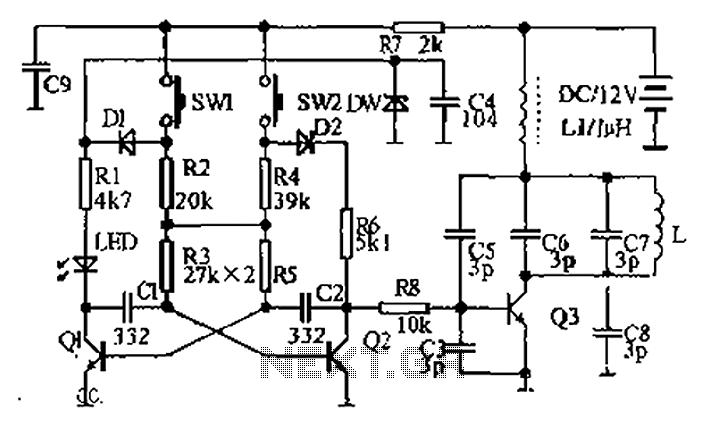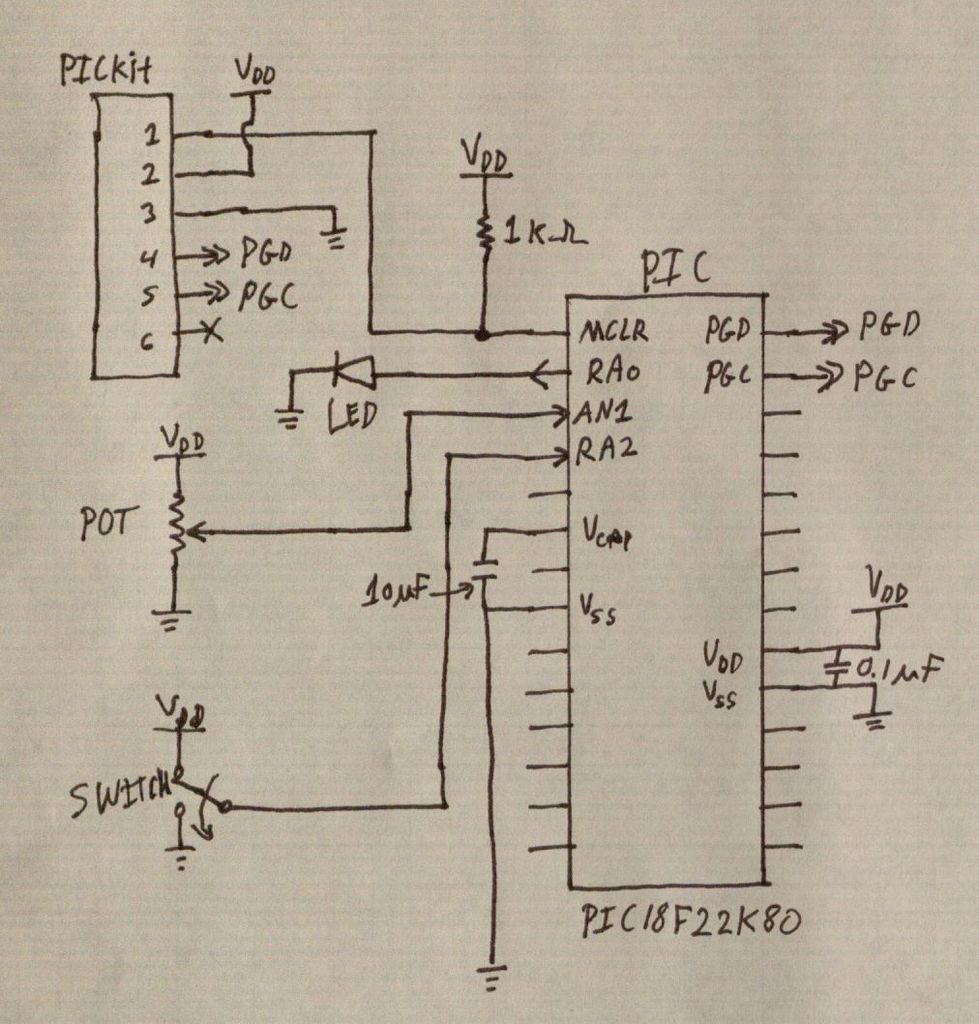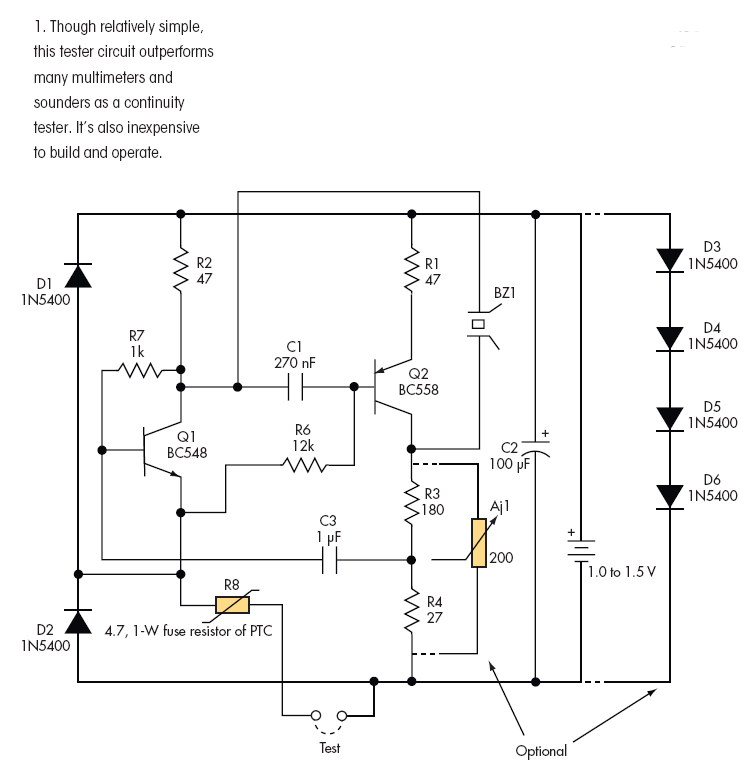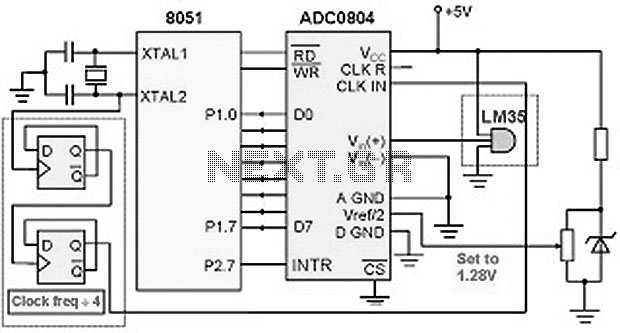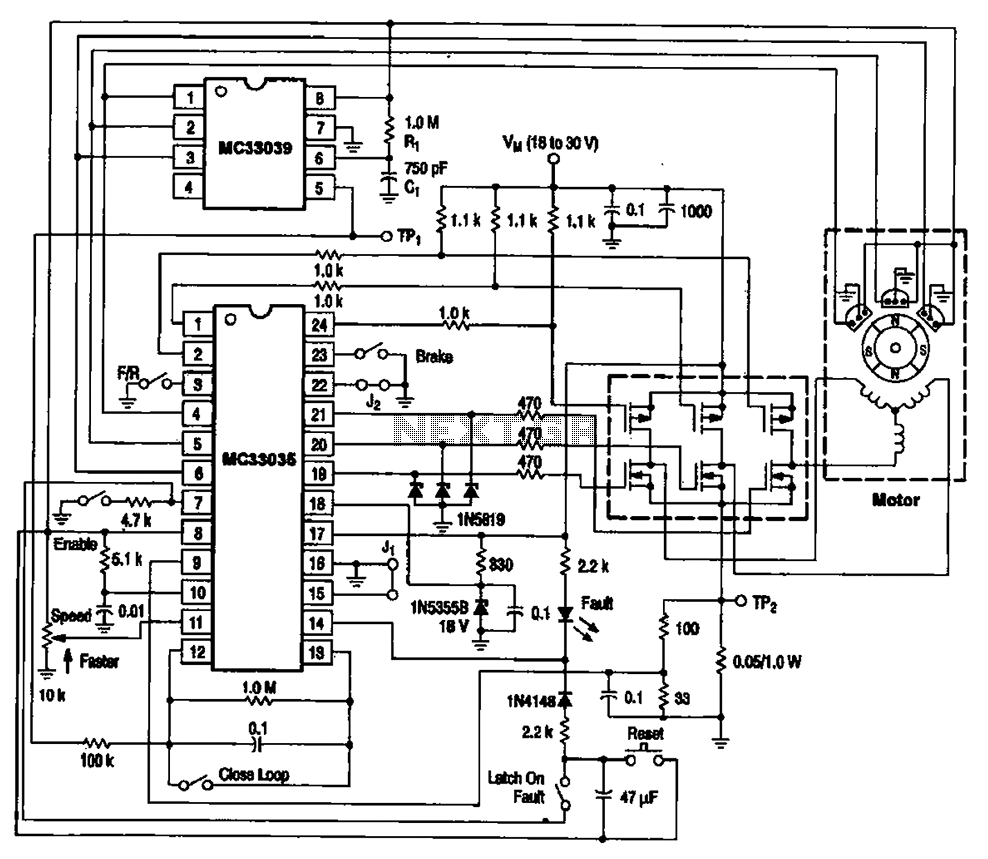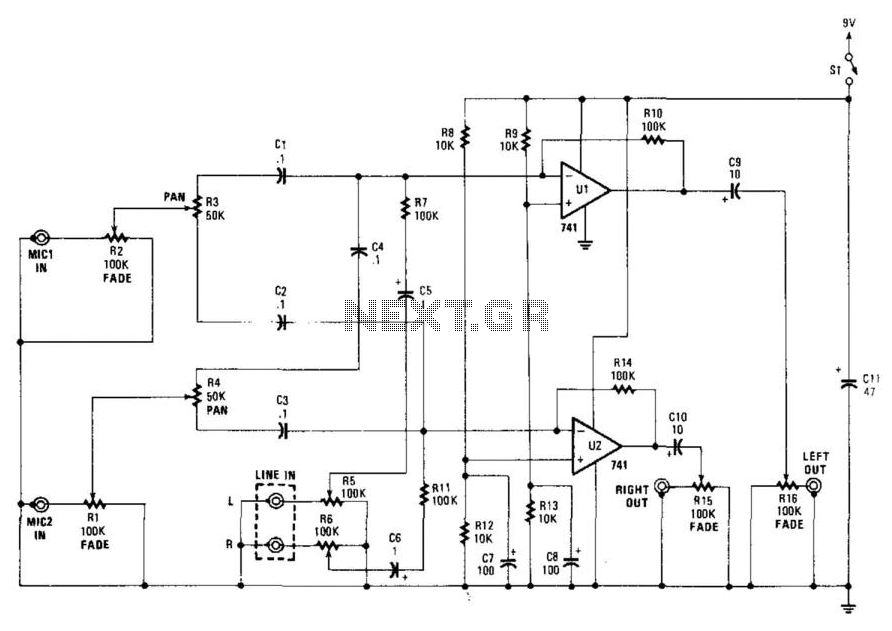
REMOTE CONTROL TRANSMIITER
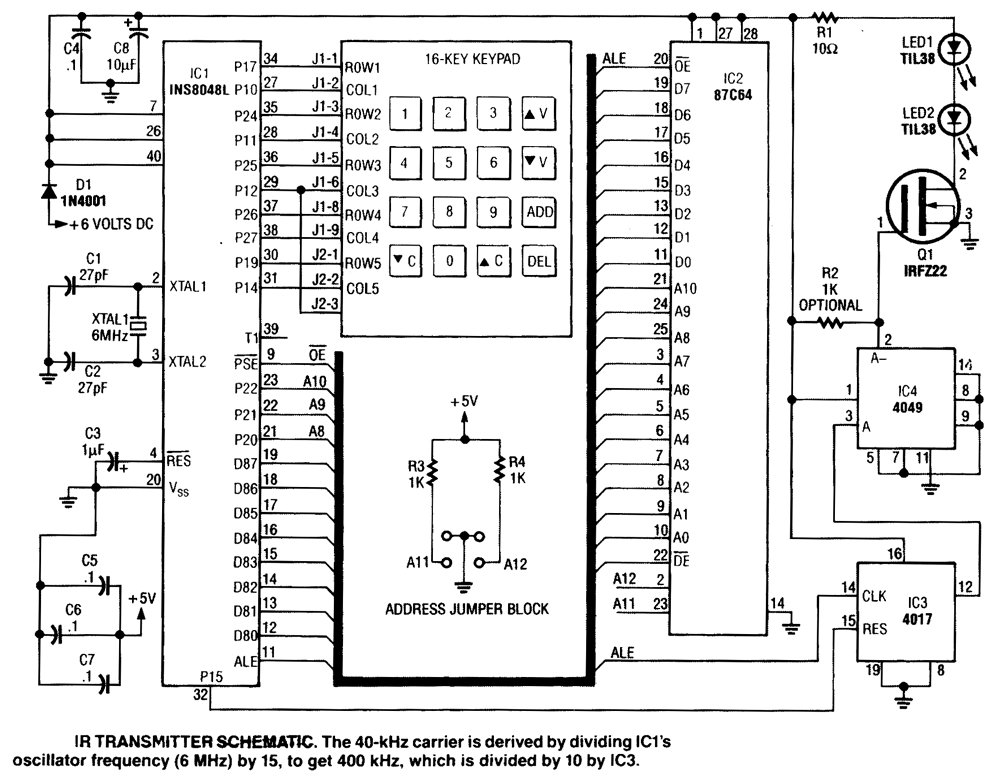
This transmitter emits an FM signal within the 88 to 108 MHz frequency range, featuring a tone of 19 kHz. It is designed to activate the FM MPX pilot carrier indicator, enabling interfacing with external devices. L4 is intended for use with a 15 cm wire antenna. L1 consists of 9 turns of #26 enameled wire wound on a 1/4-W 10-kΩ carbon resistor, while L2 comprises 2 turns wound over L1. L3 is constructed with 7 turns of #26 enameled wire on a 10-kΩ 1/4-W resistor.
The described FM transmitter circuit operates within the standard FM broadcast frequency range, facilitating the transmission of audio signals encoded in frequency modulation. The 19 kHz tone is particularly significant as it serves as a pilot tone, allowing FM receivers to detect the presence of an FM multiplex signal, which is essential for stereo broadcasting.
The circuit features three inductors: L1, L2, and L3, each playing a crucial role in the transmitter's performance. L1, with its 9 turns of #26 enameled wire, forms the primary inductor in the oscillator circuit, which is coupled to a 10-kΩ carbon resistor to stabilize the oscillation frequency. The construction of L2, with its 2 turns over L1, acts as a feedback winding that enhances the frequency stability and modulation characteristics of the transmitter. L3, having 7 turns of wire on another 10-kΩ resistor, likely serves as a part of the output stage, ensuring that the signal is adequately amplified before transmission.
The use of a 15 cm wire antenna (L4) is optimal for the intended frequency range, as it allows effective radiation of the FM signal. The antenna length is chosen to be a fraction of the wavelength of the transmitted signal, ensuring efficient transmission. This design can interface with external devices, making it versatile for various applications, such as in home audio systems or for educational purposes in demonstrating FM transmission principles.
Overall, this FM transmitter circuit is designed for effective signal generation and transmission, utilizing standard components to achieve reliable performance within the specified frequency range.This transmitter sends an FM signal in the 88-to 108-MHz range, with a tone of 19 kHz. This can be used to activate the FM MPX pilot carrier indicator, which can be interfaced to external devices. L4 is for use with a 15 CM wire antenna. L1 is 9 turns of #26 enamelled wire on a 1/4-W 10-k © resistor (carbon type), L2 is 2 turns wound over L1.
L3 i s 7 turns of #26 enamelled wire on a 10-k © 1/4-W resistor. 🔗 External reference
The described FM transmitter circuit operates within the standard FM broadcast frequency range, facilitating the transmission of audio signals encoded in frequency modulation. The 19 kHz tone is particularly significant as it serves as a pilot tone, allowing FM receivers to detect the presence of an FM multiplex signal, which is essential for stereo broadcasting.
The circuit features three inductors: L1, L2, and L3, each playing a crucial role in the transmitter's performance. L1, with its 9 turns of #26 enameled wire, forms the primary inductor in the oscillator circuit, which is coupled to a 10-kΩ carbon resistor to stabilize the oscillation frequency. The construction of L2, with its 2 turns over L1, acts as a feedback winding that enhances the frequency stability and modulation characteristics of the transmitter. L3, having 7 turns of wire on another 10-kΩ resistor, likely serves as a part of the output stage, ensuring that the signal is adequately amplified before transmission.
The use of a 15 cm wire antenna (L4) is optimal for the intended frequency range, as it allows effective radiation of the FM signal. The antenna length is chosen to be a fraction of the wavelength of the transmitted signal, ensuring efficient transmission. This design can interface with external devices, making it versatile for various applications, such as in home audio systems or for educational purposes in demonstrating FM transmission principles.
Overall, this FM transmitter circuit is designed for effective signal generation and transmission, utilizing standard components to achieve reliable performance within the specified frequency range.This transmitter sends an FM signal in the 88-to 108-MHz range, with a tone of 19 kHz. This can be used to activate the FM MPX pilot carrier indicator, which can be interfaced to external devices. L4 is for use with a 15 CM wire antenna. L1 is 9 turns of #26 enamelled wire on a 1/4-W 10-k © resistor (carbon type), L2 is 2 turns wound over L1.
L3 i s 7 turns of #26 enamelled wire on a 10-k © 1/4-W resistor. 🔗 External reference
